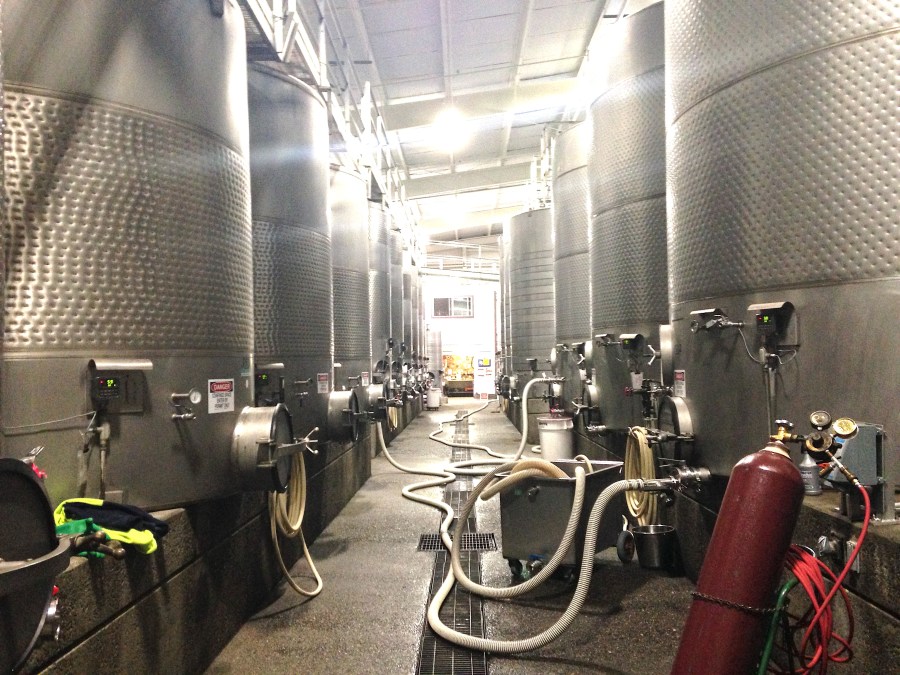When is it too much or too little?
Hygiene is co-responsible for the wine quality and it can either be underestimated or overestimated. We need to know our goal and posses the knowledge to be able to decide: when, how and what to clean.
Cleaning is the most time consuming operation in wineries without automation systems. We certainly want to be financially and environmentally sustainable by not over doing it. It also exposes people to potentially harmful situations and appropriate training is essential.
- Clean or sanitised?
- Production status
- Wine type
Clean or sanitised?
Sometimes “clean” is enough, while other times, sanitisation is required. When we talk about cleaning we refer to the removal of extraneous particles or substances from a surface or body in general. Sanitisation instead, refers to the elimination of potentially dangerous micro-organism by physical removal (e.g. sterile filtration), or chemical disinfection (killing). It is crucial to understand that in most cases a cleaning agent is not a sanitiser and vice-versa. It is actually possible to have a cleaning action and a sanitisation in a single product or operation; however, my personal preference is to use them separately based on needs while being more sustainable.
A fundamental concept to keep in mind is: if sanitisation is required cleaning comes first. In fact, a sanitiser won’t work properly on a dirty surface. Dirt particles and tartrates provide housing and protection for microorganisms against sanitisers.
As an example: sodium hydroxide (caustic soda), vs peracetic acid. The first one can be compared to a strong soap: it’s able to remove and dissolve organic matter but it doesn’t have a direct disinfectant action. Even so, as with soap, with proper rinsing it’s able to wash away microorganisms without directly killing them. On the other hand, peracetic acid is mostly a disinfectant and it doesn’t have the detergent action of caustic soda. In summary alkaline substances are mostly suitable for cleaning, while oxidising compounds including ozone and heat (steam and hot water) are sanitisers that can empower cleaning performances especially if associated with “time” and a mechanical action like pressure.
Production status
Starting with harvest, we know that grapes are naturally fully covered with yeast and bacteria. Our best tool is to inoculate our juices as soon as possible with active yeast to take over and inhibit bacteria or other unwanted organisms. This means that sanitisation is not required at this stage, (cleaning only), as the alcoholic fermentation can start promptly. If we are aware of some biological deviations that happened in the past, then, sanitisation is always recommended.
Once the juice has become wine, (alcohol presence), and there is no sugar left with a suitable amount of molecular SO2 again sanitisation is not required unless we are dealing with a sweet product, high pH, or stuck ferments with microbiological deviations.
When the wine is stored in tank or barrel it’s important to taste it on a regular basis. Experienced winemakers can detect most deviations on their early stages and take the required actions. This is particularly important for the low intervention wines, organic and “natural wines” which are more vulnerable. I would say that sanitization is mandatory, at bottling and disgorging only, everything else depends on conditions. Nonetheless, I always advise to sanitise everything at least once a year to keep colonies under control avoiding “resistance” by not sanitising too often. It is important to be aware of the “blind spots” of the various tools and equipment.
Wine type
Different wines have different hygiene requirements that mostly depend on the following factors: Alcohol content, residual sugar, malic acid, pH and last but not least, the final product expectations. Here is a brief guideline of how I normally operate:
Working with fortified wines (alcohol 18% or more): where some oxidation is part of the characteristics of the wine, I never sanitise, use zero SO2, and use no sterile filtration.
Still or sparkling wines: bases without residual sugar that undertook ML conversion with a pH < 3.6, a stable 0.8-1 ppm of molecular SO2, don’t usually need any sterile filtration/sanitisation.
Dry wines and sparkling bases: with a pH < 3.2 even with malic acid and a stable 0.8-1 ppm of molecular SO2, don’t need either sterile filtration or a particular sanitised environment. Wines designated to secondary fermentation should not have more than 0.6 ppm of molecular SO2 based on the yeast that we intend to use and when.
Nothing is black and white in winemaking and everything is dependent on circumstances so when I say the wines “don’t need sterile filtration or sanitisation”, I mean that it’s normally a safe situation, but whatever decision we are going to make, there is always a risk that must be taken into account in our management strategy and everyone needs to be aware of it. Knowing the wine you’re dealing with, is the baseline of winemaking plans.
Of the seven countries in which I have worked the UK (due to the cold climate and the low pH) is the country where sanitisation is the least required.
Looking for a UK based wine consultant? Salvatore Leone is already working with some award winning vineyards and would be happy to discuss your project.
For more like this, sign up for the FREE Vineyard newsletter here and receive all the latest viticulture news, reviews and insight




